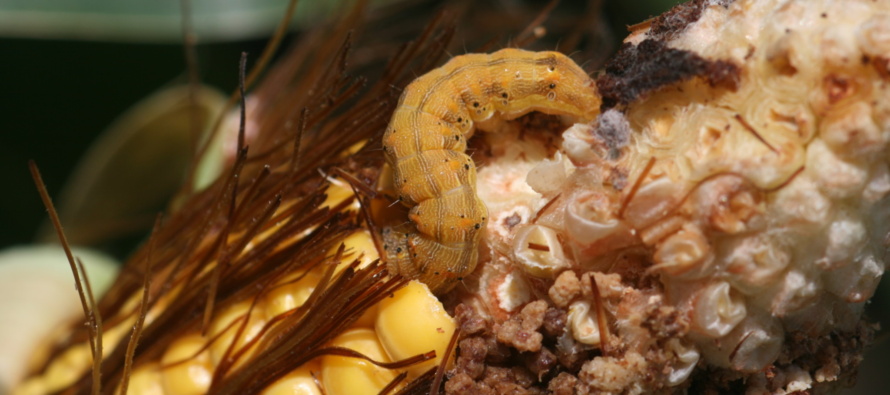Caterpillars Infesting Field Corn

Related Articles
- 2010 Soybean And Corn Variety Trial Data 3
- Mississippi Cotton Insect Situation of 2010: A Look Back 3
- Rice Insecticidal Seed Treatment Recommendations for Mississippi in 2011 0
Latest Tweets
 Much of the corn has reached the reproductive stages, while some is still in the vegetative stages. Several caterpillars, including fall armyworm and corn earworm, can infest corn, especially non-Bt corn, during both stages of development. Our current treatment threshold for both corn earworm and fall armyworm in vegetative or whorl stage corn is 100% infestation. Both caterpillars are difficult to target with insecticides during the whorl stage with even the most active insecticides providing less control than we are used to seeing in other crops. We are currently conducting research to validate this threshold, but do not have any results at this time.
Much of the corn has reached the reproductive stages, while some is still in the vegetative stages. Several caterpillars, including fall armyworm and corn earworm, can infest corn, especially non-Bt corn, during both stages of development. Our current treatment threshold for both corn earworm and fall armyworm in vegetative or whorl stage corn is 100% infestation. Both caterpillars are difficult to target with insecticides during the whorl stage with even the most active insecticides providing less control than we are used to seeing in other crops. We are currently conducting research to validate this threshold, but do not have any results at this time.
Both fall armyworm and corn earworm will infest corn ears also, with corn earworm being the most commonly observed of the two. Typically the highest level of kernel damage we observe is 25-30 kernels per ear, both in experiments and observations in commercial fields, with many corn ears having less. It is common to observe multiple small larvae in a single ear. Because of cannibalism, one large corn earworm larva is typically all that will eventually complete development. That is the reason we typically don’t see more than 25-30 kernels damaged per ear. In research conducted at Mississippi State, these levels of kernel damage did not impact yield. Additional, but preliminary research indicates that the level of kernel damage necessary to impact yield is substantially higher than that typically observed. There are several possible reasons for this lack of yield response to kernel damage. These include possible compensation by adjacent kernels and machine harvest losses. Corn earworm, especially, feeds near the tip of the ear. These kernels tend to be smaller and lighter in weight than those closer to the base of the ear, and are likely to be expelled from the combine during harvest. Also, the economics of treating for caterpillars infesting corn ears are very unattractive. Depending on the level of pressure, foliar insecticides applied from every other day to, as much as, twice a day from silk emergence to brown silk (soft dough to hard dough stage) would be required to prevent corn earworm infestations. Based on these research results and economics, we do not recommend treatment for fall armyworm and corn earworm infesting ears of field corn.




Let me tell You a sad story ! There are no comments yet, but You can be first one to comment this article.
Write a comment